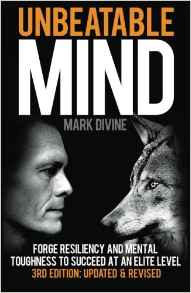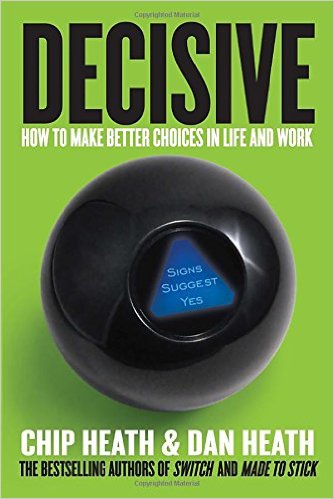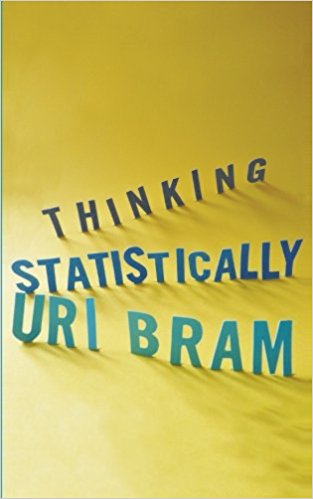
“The art of competing, I’d learned from track, was the art of forgetting, and I now reminded myself of that fact. You must forget your limits. You must forget your doubts, your pain, your past. You must forget that internal voice screaming, begging, “Not one more step!” And when it’s not possible to forget it, you must negotiate with it.” – Phil Knight
I’m interested in running a business someday and as a result, I want to read the success stories of various business leaders. Shoe Dog is the story of Phil Knight, the founder of NIKE. NIKE is an iconic athletic brand and has been for the past 30+ years.
The company wasn’t always the behemoth it is today, it took 10-15 years of successes, struggles, losses, and learning experiences, until they were well on their way. Knight writes about his thoughts and feelings throughout the process of building the NIKE brand.
In this post, you can read about the summary of Shoe Dog, our takeaways from Shoe Dog and a reading recommendation.
Summary of Shoe Dog
Shoe Dog starts out in 1962: Knight has just finished a yearlong stint with the Army, has already received an accounting degree from Oregon, and an MBA from Stanford, but does not know what he wants in life. Knight ran track at Oregon in college and still loves running. Then, at Stanford, he had an idea to distribute shoes made in Japan in the United States. He believed there was huge potential.
However, before exploring this idea, Knight wanted to travel the world. From Oregon, he goes west on a year long trip. During his second stop, in Japan, he secures the rights to distribute Onitsuka Tiger shoes. With $50 of his dad’s money, he purchases some samples. Then, for the next year, he travels the world, spending time in Asia, Africa, and Europe. Knight doesn’t know what he wants in life, but wanted to experience something different and gain a better perspective on the world.
Back to Work
Once arriving home, he goes to work selling the $50 worth of shoes (They were a lot cheaper back in the 60’s), and finds he is able to do so very easily. Next, he is back to Japan at the Onitsuka Headquarters and wants to order $1,000 in shoes.
Needing money, Knight borrows $500 from his dad and gets $500 from his college track and field coach, Bill Bowerman. Bill Bowerman, legendary track and field coach who was the head coach of the 1976 Olympic Track and Field team was originally 49% owner of the company “Blue Ribbon”. Blue Ribbon continued to grow as Knight would borrow the maximum he could from the bank, order new Tiger shoes, and then sell them out.
Blue Ribbon into NIKE
In the following chapters, I continued to learn about Blue Ribbon and how it became NIKE. I learned how Knight had to figure out how to navigate a situation with the U.S. Government; how Knight had to deal with his employees, bankers, Japanese trading companies, doubters, and other shoe companies. I learned how a group of runners, accountants, and misfits grew Blue Ribbon into NIKE and subsequently into the behemoth company it is today.
Seeing Similarities
One thing I really enjoyed in the book is I feel Knight and I share some similarities in our personalities. Both of us are analytic, not sales oriented, but both want to help others achieve their goals and dreams. One of Knight’s management strategies is having a hands off approach; by being hands off, he allows his employees the freedom to innovate and do what they want. By hiring talented individuals and letting those talented individuals run loose, he was able to have an army of loyal, smart, and innovative individuals who all lived and breathed the Oregonian culture of NIKE.
As I was drawn into the book more and more, I began to think that if Knight was 24 when he started his company, then anything is possible now for me. Now I just need to start producing ideas on what I can do to become more valuable to others!
Memorable Quotes from Shoe Dog
Here are some quotes, notes, and other thoughts I have after reading Shoe Dog:
- Hire accountants to run your business, but do not put them in charge of doing creative things.
- “… all I know is if I go out and bust my guy until I black out and somebody still beats me, and if I have made that guy reach down and use everything he has and then more, why then it just proves that on that day he’s a better man than I.” – Steve Prefontaine
- Supply and demand is always the root problem in business.
- “Don’t tell people how to do things, tell them what to do and let them surprise you with their results.”
- “You measure yourself by the people who measure themselves by you.”
- “It’s never just business. It never will be. If it ever does become just business, that will mean that business is very bad.”
- “… that’s the nature of money. Whether you have it or not, whether you want it or not, whether you like it or not, it will try to define your days. Our task as human beings is not to let it.”
- “Seek a calling. Even if you don’t know what that means, seek it. If you’re following your calling, the fatigue will be easier to bear, the disappointments will be fuel, the highs will be like nothing you’ve ever felt.”
“Seek a calling. Even if you don’t know what that means, seek it. If you’re following your calling, the fatigue will be easier to bear, the disappointments will be fuel, the highs will be like nothing you’ve ever felt.” – Phil Knight
My Takeaways
Like I said above, I’m interested in becoming a business owner or running a business. Shoe Dog got the wheels spinning inside my head. What kind of product could I come up with which would combine my passions of helping others, learning, or exercise? I’m going to be thinking about this for the coming days and weeks so I can get the ball rolling.
Our Recommendation for Shoe Dog
Shoe Dog is inspiring, full of history and facts, and a great read for entrepreneurs. Even though NIKE went public in the late 1970’s, there are many parallels we can draw to today’s international business environment.
I recommend Shoe Dog to any aspiring business owners, entrepreneurs, and athletes who want to learn about NIKE and the history of their business.
Do you enjoy reading autobiographies or biographies? What successful people do you want to learn about? What products would be beneficial to your training?

When setting goals for success, the true determinant of whether or not you achieve those goals will be the WORK you put in to get to where you want to be.
How will you do the work? How will you take bold action over time?
By structuring your life and establishing the proper behaviors, you can achieve any goal you want. How do you do this?
Enter Triggers, by Dr. Marshall Goldsmith.
How many of you have started a goal, a project, a relationship and it didn’t work out the way we envisioned it?
Maybe, you wanted to get an A on an exam. Possibly, you wanted to lose 10 pounds after holiday break. Maybe, you wanted a promotion at work. These are all reasonable goals, but sometimes they don’t work out as planned.
Sometimes we give up, fail, and decide “oh, it’s just something I can not do”.
With Triggers, you will learn how to structure your behaviors and life for success.
The rest of this post includes a summary of Triggers, takeaways from Triggers, and a reading recommendation for you.
What creates change? On a macro-level it’s simple. Nike got it right: “Just do it.”
Book Summary of Triggers
Triggers was an incredible book, and is formatted in a way to spur personal growth.
Triggers is presented in four sections:
- Why don’t we become the person we want to be?
- The importance of asking ourselves powerful questions
- How to structure your life to improve marginally each day and establish behavioral change.
- A discussion of the consequences in not changing negative behaviors will negatively impact your life
The author of Triggers, Dr. Goldsmith, received his PhD from UCLAs Anderson School of Business.
Dr. Goldsmith has helped successful leaders achieve positive lasting changing behavior for more then 35 years: with clients ranging from Alan Mulally (former CEO of Ford), David Allen (world leader in personal productivity) to Deanna Mulligan (CEO of Guardian Life, and Fortune 50s 2014 most powerful women in business).
Like everything, the key to anything is asking the right questions.
Let’s go over each of these sections in more detail below.
What is a Trigger?
What is a trigger?
Goldsmith defines a trigger as “any stimulus that reshapes our thoughts and actions.”
These stimuli are practically infinite in number, and this definition spurs a number of thoughts and questions:
- How do we avoid the bad ones?
- How do we repeat the good ones?
- How do we make triggers work for us?
In Goldsmith’s experience as an executive coach, the key triggering mechanism in our lives is our environment.
“Our environment is a non-stop trigger mechanism whose impact on our behavior is too significant to be ignored.”
For example, think about the last time you got road-rage on a crowded highway, or the happiness you experienced during the celebration of a friend’s wedding.
Every small change has a profound impact on your environment.
By getting into the right environment, you can change your performance for the better.
How to Change Your Environment Triggers for Success
Triggers is all about changing your behavior for the better.
We cannot change our environment by changing others. All we can do is change ourselves and have a positive impact in altering our own behavior.
Marshall lists a few “magic moves” that can significantly help our behavior. These are simple, but have a high impact:
- Apologizing is a magic move
- It takes a cold person to fail to forgive someone who admits they were wrong.
- Asking for help is a magic move
- few people will refuse a sincere request for help.
- Optimism
- being positive inside yourself, and outward to others shows confidence that you believe everything will work out. It’s a self fulfilling prophecy in the change process.
“Success in not final, failure is not fatal: It is the courage to continue that counts.” – Winston Churchill
Ask Active Questions to be More Successful
After adjusting your perspective and thoughts on your outlook on life, you can continue to grow as a person by doing one more “magic move”.
Asking active questions is the final “magic move.”
By asking active questions, you can get more clarity on your goals and life.
- Are you doing your best to be happy?
- Did you do your best to find meaning?
- Are you doing your best to build positive relationships with people?
- Did you do your best to be fully engaged?
These are questions are all very important for personal growth.
As you continue to adjust your behaviors, coming back to these questions will be good for understanding where you came from, where you are, and where you are going.
Personal growth is PERSONAL. It is your responsibility to be the change you want in the world.
“Ask not what your country can do for you, ask what you can do for your country.” – JFK
Takeaways from Triggers
With every book you read, it is a must to have takeaways and actionable items to implement in life.
Triggers is all about living intentionally, and taking personal responsibility of your actions and life.
The main takeaway from Triggers is each of us have the ability to change our behavior for the better. By adjusting our environment, by creating the right stimuli for success, and growing over time, anything is possible.
Rarely will your improvement and development be an overnight success. BUT, with consistent daily disciplines and efforts over time, you will be able to reach your goals and become the success you want and DESERVE.
Our Recommendation for Triggers
Triggers is a fantastic personal development book, and has many great tips and strategies for becoming better as a person.
If you aren’t quite happy with the person you currently are, then reading Triggers could help you get on the path to becoming the person you want to be.
You are responsible for your personal development and growth. No one else can be the change you want to be.

Critical and logical thinking is so necessary for success in this world. With the importance of logical thinking, why does it seem like so many people don’t know how to think? Wouldn’t you think you should learn how not to be wrong?
How Not to Be Wrong: The Power of Mathematical Thinking, by Jordan Ellenberg, is a blueprint for mathematical and logical thinking.
When going through school, the different theories and concepts we learn are not always presented with the everyday reasoning behind them.
How Not to Be Wrong gives you a framework for how to think logically, and presents it with everyday language and examples.
The best part? How Not to Be Wrong is non-technical, and no prior math experience is needed.
These math concepts are important for math purposes, and we can take these principles and apply them in our everyday lives for success.
The rest of this post includes a summary of How Not to Be Wrong, takeaways from How Not to Be Wrong, and a reading recommendation for you.
Basic Rule of Mathematical Life: If the universe hands you a hard problem, try to solve an easier one instead, and hope the simple version is close enough to the original problem that the universe doesn’t object.
Book Summary of How Not to Be Wrong
How Not to Be Wrong: The Power of Mathematical Thinking is an easy and enjoyable read about mathematical thinking.
How Not to Be Wrong is split up into discussing 5 different mathematical concepts:
- linearity
- inference
- expectation
- regression
- existence
Ellenberg looks to explain each of these concepts using stories from the past and non-technical examples.
To read this book, you do not need any formal mathematical training – there are no equations and many examples use illustrations to help the reader visualize the material.
Below is a description of each section:
Linearity
The first mathematical concept discussed in How Not to Be Wrong is linearity.
Many mathematical models are linear and are used incorrectly.
The point of this section is to make the reader aware that non-linearity, i.e. curved lines, are much more common in the real world.
Some topics Jordan Ellenberg looks at in this section include, but are not limited to, government fiscal policy (what tax rate maximizes tax revenue?), curves are straight locally but curved globally, and projecting obesity in 2048 (100% of Americans will be obese based on the current trend!).
Use caution when using linear regression.
Inference
The first mathematical concept discussed in How Not to Be Wrong is inference.
Many mathematicians use hypothesis testing to make conclusions about statistical tests. This is commonly taught in entry level statistics courses.
Ellenberg discusses how many people produced statistical “tests” showing that various messages were could be found in the Torah if you mix and match the letters in a mathematical way (Ellenberg says it is kind of bogus).
Ellenberg also discusses the hypothesis testing, p-values, and how to appropriately draw conclusions (essentially proof by contradiction).
Improbable things happen a lot – “what is improbable is probable.”
Expectation
The first mathematical concept discussed in How Not to Be Wrong is expectation.
Expectation is the average value of a situation (put in layman’s terms).
In this section, Ellenberg talks about how multiple groups won large sums of money playing a lottery game in Massachusetts, and looks at common misconceptions regarding the aggregation of the average value of various situations (the concept of additivity).
Regression
The first mathematical concept discussed in How Not to Be Wrong is regression.
Mathematicians use regression and correlation analyses to to draw conclusions about two variables.
A common mistake is drawing the conclusion that variables have a relationship based on the data where it could just be chance they are related.
In addition, you have to be careful when assigning the direction of the relationship. In the 1950’s, there were multiple studies on smoking and lung cancer. A question a mathematician could ask is “Does lung disease cause smoking?” (this is probably not the smartest question to ask, but the data could suggest this relationship).
Correlation is not transitive (no correlation does not imply no relationship)
Existence
The first mathematical concept discussed in How Not to Be Wrong is existence.
This section talks about a few different situations where unexpected results arise. One of the situations is in a three person political race and using different ways to tally the votes will result in different outcomes.
You need to know that it is possible to create the scenario you are analyzing, and not coming up with an imaginary outcome.
It is very difficult to apply traditional methods to “unknown unknowns”.
Takeaways from How Not to Be Wrong
With every book you read, it is a must to have takeaways and actionable items to implement in life.
From How Not to Be Wrong, the main takeaway is when working with data, you need to be careful with your assumptions and analysis.
Thinking mathematically is all about being skeptical about your results, making sure you have the right assumptions, and doing your due diligence.
You can twist and lie with data very easily. It takes a disciplined person with the right training to be able to do what is right with your analysis, and be aware of when others are trying to skew the results.
By understanding the 5 mathematical concepts above, you will be able to navigate tough situations more easily and logically.
Genius is a thing that happens, not a kind of person.
Our Recommendation for How Not to Be Wrong
How Not to Be Wrong: The Power of Mathematical Thinking is an easy and enjoyable read, and will be influential to any reader.
Whether you are an analyst at a company working with numbers, someone who plays games of chance, or someone who wants to increase their intuition of the subject, you’ll definitely want to check out How Not to Be Wrong.
Readers: do you try to gain intuition about technical subjects? Do you think learning about math and logic is valuable in your life?

Your skill with people determines the quality of your social life, your business life and your family life. To be better in our interactions with other people, we must properly understand people and their nature. After understanding people, we can tweak various behaviors to create a fantastic social environment around us.
Skill with People, by Les Giblin, provides you with actionable advice to help you in your interactions with others. Skill with People goes over many practical tips to dealing with people, ranging from talking to people, to making people feel important, to critiquing some successfully, to making a good impression.
Interacting with other people is extremely important in today’s world. Communication is the #1 skill many employers and people look for. To be able to navigate a variety of social situations – disagreements, negotiations, friendly conversations – is a skill we can all work on.
For the rest of the post, I give a brief summary and my takeaways and recommendation for you.
Summary of Skill with People
Understanding people and human nature simply involves recognizing people for how they think and what they are:
PEOPLE ARE PRIMARILY INTERESTED IN THEMSELVES, NOT YOU!!!!!
Put another way, any given person is 1000x more interested in themselves than they are in you.Once you understand most people care primarily about themselves, you can start creating great social situations. Next time you talk to someone, put 100% of your focus on looking to make that person feel special and wanted. Ask them good, penetrating, and thoughtful questions about their life – it doesn’t really matter about what.

Actionable Steps and Tips
Like I mentioned above, Skill with People is PACKED with actionable steps on interacting with others. These subjects include 10 “how-to’s”:
- How to Skillfully Talk to People
- Talk to people about the most interesting subject – THEMSELVES!
- Remove the following words from your vocaulary: “I, me, my, mine”
- How to Skillfully Make People Feel Important
- Listening to them and complimenting them (when appropriate) are 2 great ways to making people feel important.
- How to Skillfully Agree with People
- Try to be naturally agreeable – no one likes to be disagreed with. Don’t start arguments.
- How to Skillfully Listen to People
- Look at the person talking. A person worth listening to is a person worth looking at.
- Stick to the speaker’s subject and ask follow-up questions on the topic.
- How to Skillfully Influence People
- Find out what people want, and then work towards helping them reach their goal or target.
- How to Skillfully Make up People’s Minds
- Give reasons for them to say yes to you. Provide clear benefits for your proposal.
- How to Skillfully Set People’s Moods
- Be a leader in your interactions and create a happy environment. Next time you see a friend, co-worker, or family member, SMILE! 🙂 🙂
- How to Skillfully Praise People
- Praise and be grateful when people help you out or do something amazing. Sincerity is key.
- How to Skillfully Critique People
- Critique in private. Make criticism impersonal and on the act, never on the person.
- How to Skillfully Thank People
- Thank people for a specific action and task, and include their name: “Thank you Mary for your great work at quarter-end, we could not have done it without you.”
By applying each of these points, you will see great success in your social interactions.

My Takeaways
With all books I read, I look to have a few takeaways and actionable steps for me to apply in my life. Skill with People is packed with actionable items.
The 3 main takeaways I’m looking to focus on in the near future are:
- I’m going to focus on talking to people about their favorite subject (themselves)
- Who is the most important person in the world? It’s you!
- I will look to critique more skillfully
- Skill with People goes into 7 ways to critique people – one of which I find good: make criticism impersonal – criticize the act, never the person.
- Be a leader in my interactions by setting other people’s moods appropriately.
- When I see a friend, family member, co-worker, etc., I will give them a big smile and tell them I’m happy to see them 🙂
What excites me about my continued pursuit of self development is I can always learn more and become better. I read Skill with People about a year and a half ago and I had new thoughts and new takeaways. Given the book is less than 50 pages, I’m going to read it at least every 3 months to refresh my memory on communication, emotional intelligence, and interacting effectively with others.
“Knowledge itself is of no value. It is THE USE OF KNOWLEDGE that makes it valuable. Putting this thought another way – life does not pay off for you on what you can do. Life pays off for you on what you do. ” – Les Giblin
Our Recommendation for Skill With People
You need to read Skill with People. Skill with People is written in a very simple manner, yet it’s teachings are so profound. I read How to Win Friends and Influence People, by Dale Carnegie, while I thought it was good, Skill with People was both shorter and had more actionable steps. I wish I’d read it a few months back – being good with people, both on a conversation, but also an emotional level, is key for success in the world.
For me, I want to focus on talking to people about their favorite subject (themselves), looking to critique more skillfully, and to set other people’s moods appropriately. By doing incorporating these action steps into my daily life, I will display more skill with people.
Do you look to get people talking about themselves? What tips do you have for dealing with people? Do you enjoy reading books on communication and human interaction?

Humans have been the dominant species on our Earth for many thousands of years. We know humans have been the dominant species, but how did they become the dominant species? How have Homo Sapiens become supreme over other species?
Sapiens: A Brief History of Humankind, by Yuval Noah Harari, examines the following fact: one hundred thousand years ago, there were six species of humans.
Today, there is just one species of humans: Homo Sapiens.
How did Homo Sapiens succeed in lasting throughout time? Why did Homo Sapiens go from groups of hunter-gathers to living in cities and nations? What makes Homo Sapiens unique to the animal kingdom?
Sapiens looks to answer these questions and more.
The rest of this post includes a summary of Sapiens, takeaways from Sapiens, and a reading recommendation for you.
Book Summary of Sapiens: A Brief History of Humankind
In Sapiens, we get a brief history of humankind.
Sapiens is broken up into four sections:
- Cognitive Revolution
- Agricultural Revolution
- Unification of Humankind
- Scientific Revolution
The first section examines what Harari calls the “Cognitive Revolution”. The Cognitive Revolution describes the time period where humans’ brains developed and humans could now make tools and become more efficient in their work.
The second section examines the Agricultural Revolution. Many of us know what occurred during this time period: humans went mainly hunting and gathering for their food to growing crops, domesticating various animals, and becoming sedentary.
The third section is called “The Unification of Humankind”. In this section, Harari looks at the social structures which have been put in place to unify humankind. Some of these structures include religion and nations. Here, Harari introduces his concept of the “Imagined Myth”.
Finally, in the final section, called “Scientific Revolution”, Harari looks at the recent past and talks about economic constructs, such as communism or capitalism, technological developments, and how the industrial revolution transformed the world once again.
At the end of Sapiens, Harari tries to answer a few deep questions:
- Have we become happier as history has unfolded?
- With technological development and increases in efficiency of housing and food production, have we become happier?
- If we wanted to, could we break free from the influence of our ancestors?
There are many other questions Harari poses for the reader to think about. It will be interesting in the future as we continue to evolve.
Why Homo Sapiens Dominate: The Concept of the “Imagined Myth”
In Sapiens, Harari introduces and discusses the concept of the “Imagined Myth”.
Harari argues the concept of the “Imagined Myth” has been instrumental to the unification of humankind.
His argument, essentially, is because humans are able to be creative and think of things that are not rooted in reality, they have became more successful, speaking from an evolutionary standpoint.
Different imagined myths throughout history have included things like religion, money, government, nations, cities, sports teams, companies, and the list goes on.
Think about it for a second, what makes a nation a nation?
It’s the common belief that all the people who reside in that nation believe the nation exists. It is only because a group of individuals believe in the imagined concept of a nation that we have nations.
Humans are the only species in the world where you can have two strangers who become friends because they share a nationality, a religion, or are fans of the same sports team.
Takeaways from Sapiens
With every book you read, it is a must to have takeaways and actionable items to implement in life.
After reading Sapiens, my main takeaway was most of our society is made up and imagined.
There are so many things which are just imaginary and in our mind. While we need to follow the rules and constructs in place, we shouldn’t get stressed over these imaginary things (i.e. nations, sports, religions, etc.)
Our Recommendation for Sapiens
Sapiens is a fantastic book, which both touched on history, but also human psychology.
To understand where we are today, it’s important to understand where we came from. Sapiens is a fantastic resource for learning where we came from, and is very thought provoking and challenging when thinking about where humans go next.

Unbeatable Mind, by Mark Divine, was highly recommended by a friend who read it a while back. I have to say, it not only lived up to all expectations, but CRUSHED them straight over the Green Monster (left field fence of Fenway Park, a baseball reference). Unbeatable Mind combines the characteristics instilled in Navy SEALS with the spiritual embrace of a Tibetan Monk.
Summary of Unbeatable Mind
One major point of Unbeatable Mind is defining your purpose. Defining your purpose can be accomplished by asking yourself the tough questions and visualizing the human being you want to become while focusing on your impact on the world. Defining your purpose is a DEEP, soul finding exercise, and makes you ask if you have a burning fire for what you are doing with your life.
This is challenging, but essential for understanding why you are on this earth. We are all unique, we are all who we are today by an infinite amount of choices, feelings, and experiences. Our main goal is to help other members who are looking for self improvement, whether this be financially, for their health, or for their well being.
Mark Divine was a Navy SEAL and describes the SEAL Training experience. Divine addresses what the SEALS are known for – MENTAL TOUGHNESS. In the first phase of training, the third week is called “Hell Week”. The new SEALS are put through brutal and difficult operational training on little sleep; it is a test of mental toughness, physical ability, critical thinking, teamwork, attitude, etc. On average only 1 out of 4 students make it through “Hell Week”, which is universally known as one of the most difficult military entrance programs.
“When a man is beaten, tormented, and defeated… He is ready to learn something.” – Ralph Waldo Emerson
Speaking of mental toughness, here is one of my favorite movie scenes of all time from Facing the Giants… if you ever think you can’t do something, just try your best.

Mental Performance Strategies
Unbeatable Mind gives various strategies for improving mental toughness and mental performance. Mediation and breathing are keys to calming and focusing the mind. One exercise that Divine advocates, and something I have actively practiced since college, is Box Breathing. It is a simple breathing pattern that consists of a 1-1-1-1 ratio.
Box Breathing
Box breathing is performed as follows:
- Exhale completely
- Inhale deep into your lungs for 5 seconds
- Hold the breath in for 5 seconds
- Exhale for 5 seconds
- Hold breath for 5 second
- Repeat
This slows down your breathing, which is integral to reducing stress, and focuses your thoughts. SERIOUSLY, if you’ve read this far! Give it a try now!
11 Secrets of Mental Success
In addition to the various exercises Divine presents for us to improve our mental abilities, Divine gives 11 secrets to success, which I’ve listed below. These secrets fit with the principals taught throughout the book.
- Live an examined life, and embrace sacred silence.
- Know your ONE thing, your purpose, passion, and principles.
- Connect all your small actions to these.
- Develop mental and emotional control: Master the Big Four of Mental Toughness and Emotional Resiliency
- Challenge yourself to find your 20X, and improve daily.
- Turn to others in service, and develop a winning team.
- Align to win in all three spheres of I, We, and It.
- Select SMART-FITS targets.
- Employ KISS “good enough” planning.
- Take massive action, and then fail forward fast.
- Never, ever quit.

Our Recommendation for Unbeatable Mind
What I enjoyed most about Unbeatable Mind is how Divine talks about his life experiences and gives actionable steps for us to increase and improve our mental toughness and mental performance. We are all different, but may as well stand on the shoulders of giants. I highly recommend Unbeatable Mind to anyone looking to increase their personal performance! Mental toughness is a highly underrated trait and skill; be the one who has it and succeed beyond your wildest dreams.
Your level of success will rarely exceed your level of personal development , because success is something you attract by being the person you become. – Hal Elrod
Readers: have you found your one thing, purpose, or destiny? What do you love doing? What’s your passion?

Why does strategic thinking seem so tough sometimes? Why are some scenarios very scary to deal with, especially when there’s a need to be decisive? Is there a decision making framework which we could tap into to help in these situations?
Decisive: How to Make Better Choices in Life and Work, by Chip and Dan Heath, is all about improving your decision making.
In Decisive, you will learn about the villains and common pitfalls many people struggle with in making decisions, and a framework to enable better decision making.
Being able to make good decisions is a great skill to have. Decision making is a key component to becoming better as a person, making more money, and climbing the corporate ladder.
Are you looking to become a better decision maker? Would you like to make better choices in life and work?
The rest of this post includes a summary of Decisive, takeaways from Decisive, and a reading recommendation for you.
“A remarkable aspect of your mental life is that are rarely stumped”. – Daniel Kahneman
Book Summary of Decisive
Decisive is a book all about decision making. In the first part of Decisive, the authors talk about the four villains of decision making. After discussing these villains of decision making, the authors provide a decision making framework to make better decisions.
As discussed in Decisive, there are four villains of decision making:
- Narrow Framing
- People naturally view a problem as “this or that”
- The Confirmation Bias
- People naturally will seek information that support their beliefs and this tends to warp their understanding and perspective
- Short-Term Emotion
- People are influenced by emotions that will fade over time
- Overconfidence
- People generally will have too much faith in their predictions
To overcome these four villains, the authors discuss the W.R.A.P framework for better decision making. The W.R.A.P. framework is as follows:
- W = Widen Your Options
- R = Reality Test Your Assumptions
- A = Attain Distance Before Deciding
- P = Prepare to Be Wrong
Below, let’s go into each of these in further detail.

Widen Your Options
The first thing to do when looking to become a better decision maker is to widen your options. If you are tasked with making a decision, it is important to think about all of the possibilities, rather than be closed minded.
When looking to make a decision, people should consider more than one option, and adopt a “this and that” mindset.
When studying companies, only 29% of organizations considered more than one alternative (versus 30% of teenagers). Often our options are more plentiful than we think.
Considering opportunity cost can help you avoid a narrow frame (what am I giving up by going down this path?).
A few strategies to widen your options include:
- The “Vanishing Options Test”
- What if your options disappeared? What would you do then?
- Ladder up
- For example, a swimsuit firm looked at sharks to develop technology to build a high performing swimsuit
- If you feel stuck, look for someone else who has solved your problem
- No need to reinvent the wheel!
When you consider multiple options simultaneously, you learn the “shape” of the problem. By widening your options, you can understand the problem better, and be more unique and original with your solution.
Reality Test Your Assumptions
After widening your options, the second strategy for making better choices is reality testing your assumptions.
To reality test your assumptions, you can do the following:
- Consider the opposite
- Considering the opposite can help you understand the problem more fully.
- Spark constructive disagreement within our organizations
- Ask “What would have to be true for this option to be the very best choice?”
- Test your assumptions with deliberate mistakes
- An example in the book was a women who went out on a date with a guy who wasn’t her “type”. She ended up marrying the guy!
- Ooch – run small experiments to test your theories.
- Rather than jumping head first, dip a toe in.
Some other ways you can reality test your assumptions is looking to figure out the average and base case of a scenario.
For finding the average and base rate of a situation, it’s important to be rational and think critically.
If you can’t find the “base rates” for your decision, ask an expert. Experts are good at estimating base rates, but bad at predicting.
To gather the best information, zoom in and zoom out. Consider both the minute details and the big picture.
By reality testing your assumptions, you’ll be in a better spot to make a good decision.
Attain Distance before Deciding
After reality testing your assumptions, it can be best practice to take a step back and attain distance before making a final decision.
Fleeting emotions tempt us to make decision that are bad in the long term. For example, sales people are trained to prey on customers’ emotions.
To attain distance before deciding on a major decision, you can do the following:
- Use the 10/10/10 strategy
- How will I feel in 10 minutes, 10 months, and 10 years about this situation?
- Ask yourself: “What would I tell my best friend to do in the same situation?”
- Examine your core priorities and principles. Look at your long-term emotional values, goals, aspirations.
- What kind of person do you want to be?
- What kind of organization do you want to build?
- The goal isn’t to eliminate emotions, but to honor the emotions that count.
Our decisions are often altered by 2 subtle short-term emotions: mere exposure, we like what’s familiar, and loss aversion, losses are more painful than gains.
A study showed students wouldn’t sell a mug for $7 when they wouldn’t pay more than $3 for it.
After distancing yourself from the problem, you can gain a better perspective on the situation.
Prepare to Be Wrong

Unfortunately, it is very difficult to predict the future. When making a decision, realize that you may be wrong.
And this is okay.
For thinking about what could happen, remember the future is not a “point”, but a range of possibilities.
One great strategy when looking to make a decision is using the concept of bookends. Consider the best case and worst case scenarios (in the book, these are called the pre-parade and pre-mortem scenarios):
- Examine the pre-mortem scenario: “It’s a year from now. Our decision has failed utterly. Why?”
- Examine the pre-parade scenario: “It’s a year from now. We’re heroes. Will we be ready for success?”.
By bookending, anticipating and preparing for both adversity and success, we stack the deck in favor of our decisions.
After making a decision, to make sure we don’t compound on bad decisions, it’s important to create tripwires.
Creating tripwires is asking the question, “If we aren’t successful by this future date, we will kill the project.”
Tripwires help since we tend to escalate our attachment to a project that is going poorly. Many powerful tripwires are triggered by patterns rather than dates, metrics, or budgets.
With these 4 decision making strategies, we can make better decisions in our life, work and career.
Takeaways from Decisive
With every book you read, it is a must to have takeaways and actionable items to implement in life.
For Decisive, the two main takeaways which stuck with me over time have been the bookending method, and using the 10/10/10 strategy.
Many people, including myself, look at the worst case scenario when thinking about something outside of our control and comfort zone.
However, this is just one case in a range of possibilities.
After thinking about the worst case scenario, it’s important to also think about the best case scenario, and realize the end result will probably land somewhere in the middle.
With the second takeaway, by applying the 10/10/10 strategy, I’ve been more strategic with my daily purchases and expenses.
A lot of times, I’ll be craving some snack. Then, I’ll think that in 10 minutes, or 10 months, I won’t even remember my craving, and I’ll be fine.
This helps me save money and stay healthy.
There are many amazing takeaways in Decisive, and I highly recommend this book.
Our Recommendation for Decisive
Making good decisions is so critical for success in this world. By making better choices in your life and work, you can avoid headache and reach your goals.
Decisive is a fantastic book which will challenge your thinking and mindset. Through learning about making better choices, you can open your mind to all of the fantastic possibilities of the world.
Readers: do you use a strategy for decision making? Do you fall victim to the villians ever?

Are you interested in making more money? Do you want to become rich? Are you interested in learning how to get rich?
How to Get Rich, by Felix Dennis, is a no nonsense summary of how Felix Dennis, founder of Maxim magazine, got rich. Dennis takes us through the ups and downs of his business life and personal life, and also gives his opinion on how to get rich (not just rich, like really, really rich).
Dennis started out in the United Kingdom in the late 60’s, and worked his way to riches by owning his own publishing business. In addition to the main publishing business, he was a partner in many other deals and opportunities which helped grow his wealth.
In the beginning of the book, he states he is worth somewhere between $400 million and $900 million pre-tax. However, because much of his wealth is illiquid, he didn’t really know (or care; he was rather old at the time of writing How to Get Rich, and didn’t care about much except the pleasures of life at his stage in life.)
How to Get Rich is not a self help book, as Dennis states multiple times, but outlines and discusses many principles, virtues, and lessons on how to get rich.
The rest of this post includes a summary of How to Get Rich, takeaways from How to Get Rich, and a reading recommendation for you.
I’m concerned that the fear of failing, in the eyes of the world, is the biggest impediment to amassing wealth. – Felix Dennis
Book Summary of How to Get Rich
How to Get Rich discusses various topics one needs to be aware of when looking to become rich.
These topics include, but are not limited to:
- ideas
- luck
- ownership
- negotiating
- delegation
- focus
- self-belief
Below are some main takeaways from each of these skills for becoming rich from How to Get Rich.
The Importance of Executing Your Ideas
Ideas are worthless without action.
Dennis discusses the importance of executing your ideas numerous times throughout the book.
Some remarkable quotes from the book include:
- “The follow-through, the execution, is a thousand times more important than a “great idea”.”
- “It is how ideas are implemented that counts in the long run.”
- “Ideas don’t make you rich. Correct execution of ideas does.”
Essentially, without an action oriented mindset, you will not be able to become rich. If brainstorming and coming up with ideas is all you do, then you will not be successful with your business.
The Role of Luck in Becoming Rich
What makes How to Get Rich great is how Dennis discusses his successes and his failures.
When he is discussing the topic of luck, he talks about how he ended up in the hospital due to his drug use.
What was lucky about the situation is that he insisted on going to his cottage and since he was not in New York City, he was able to be diagnosed quickly and accurately in a smaller hospital. This allowed him to turn his life around and continue to make more money.
This event was certainly lucky; Dennis could have died from this event.
When building, growing, and owning a business, there are many events and outcomes which can be influenced by luck.
If you want to become rich, you will have to have luck on your side.
Why Ownership is Important When Looking to Become Rich
If your goal is to become rich, Dennis argues ownership of a business is critical.
Working for other people, as an analyst or a manager, will rarely lead to extreme wealth.
When owning a business, you tap into a different wealth building equation. With a business, you are increasing your wealth by both receiving the cash flows from the business, but also own a valuable asset.
If you are working for someone else, all you get is your salary or hourly wage (which is inevitably tied to the hours you work).
Some interesting quotes from How to Get Rich about ownership include:
- Cash flow management is the most important thing in a small business.
- Managers rarely become rich.
- “To become rich, you must be an owner, and you must try to own it all.”
- Ownership is the only thing that counts.
- “Delegation and promotion is a way to get rich.”
- “Build a program of carefully tailored delegation and well-deserved promotion. This will create an atmosphere of loyalty, efficiency, and camaraderie that feeds upon itself.”
Why Delegation is the Key to Maximizing Your Businesses’ Potential
Each person only has 24 hours in a day. There is only so much time for learning, work and executing on your ideas.
If you want to scale your business, and scale your wealth, hiring others to help you will be critical.
Working with other talented individuals can help you grow your business, and allow you to get more done over time.
Delegation of tasks will free you up to think more strategically, and focus on what really matters for your business.
Some remarkable quotes from How to Get Rich on delegating include:
- “Talent is the key to sustained growth, and growth is the key to early wealth.”
- “Identify it, hire it, nurture it, reward it, protect it, and when the time comes, fire it.”
The Importance of Focus on Your Path to Building a Business
Focus is one of the most important skills to cultivate if you want to experience growth in your life.
While it seems like multitasking is a great way to get ahead, being able to focus and be consistent with your actions over time will be much more beneficial.
What’s the most critical item to get done today? Can other things wait?
Focusing in on the one thing that is necessary for success today will allow you to move forward over time and grow your business.
Why You Need to Believe in Yourself for Success
Do you believe you can achieve your goals? How’s your mindset? Do you believe you can do whatever you put your mind to?
Believing in yourself is incredibly important when trying to get out of your comfort zone, building a business, and growing as a person.
When looking to become rich and wealthy over time, self-belief is incredibly important.
Through affirmations and mindset work, you can trick your brain into believing whatever you want.
Here are some remarkable quotes from How to Get Rich on self-belief:
- “Belief in yourself and faith in your project can move mountains. But not if you insist on trying to scale the mountain by an impossible route which has already failed.”
- “Boldness has genius, power, and magic to it.”
- “Without self-belief nothing can be accomplished. With it, nothing is impossible.”
All of these great tips were very interesting and thought provoking in How to Get Rich.
Takeaways from How to Get Rich
With every book you read, it is a must to have takeaways and actionable items to implement in life.
There are many amazing takeaways from How to Get Rich, but two main takeaways stick out:
- Owning a business will help you become rich faster than holding a regular job (if done right)
- Focusing in on one thing at a time is so important for getting things done.
Similar to the book, The Millionaire Fastlane, building and owning a businesses can result in the rapid creation of wealth over time.
There is a lot of risk in starting and owning your own business. However, done right, you can grow your riches through both the cash flow of the business, and the asset value of the business.
The second takeaway is the importance of focus in life. There is only so much bandwidth you have to do work, so the best strategy for success is to determine what matters for you in this moment and do it to the fullest.
Multitasking and trying to do too much at once will not lead to success as a business owner.
How to Get Rich is a fantastic book about business, life and getting rich, and I definitely am thankful I read it.
“The world is full of money. Some of it has my name on it. All I have to do is collect it.” – Felix Dennis
Our Recommendation for How to Get Rich
How to Get Rich is extremely insightful in giving tips on how to get ridiculously wealthy.
With a combination of story telling, tips and raw details, How to Get Rich is an entertaining and informative book for people interested in business.
Whether you are interested in entrepreneurship, have started a business, or already have a built business which is successful, you will get something out of How to Get Rich.
Readers: do you enjoy books on entrepreneurship? Are you interested in running your own company?

Making more money in your 20’s is a great way to set yourself up with a fantastic financial foundation for your future. To make more money, you need to provide more value. Learning different skills can help you provide more value and in this post, you will learn 9 skills and learn how to grow in each of these skills to become better as an employee.
Is there a promotion you want at work? Are you looking to grow your salary? Would it be nice to have more money coming in each month?
The first thing you should do when trying to increase your salary at work, is start working on yourself, and build your skill set above and beyond in your current role. Sometimes that can be hard to figure out.
However, the best way to start is to focus on your soft skills.
Soft skills are your ability to relate to people and manage projects.
When employers are looking to promote people, they keep in mind hard skills, the skills needed to do the task at hand, but really look at soft skills. Good leaders possess these soft skills and use them well. Problem solving, delegating, motivating, and team building are all much easier if you have good soft skills.
In this post, I’m going to share with you 9 soft skills that you can cultivate in your 20’s to grow your salary and make more money.
9 Must-Have Soft Skills to Grow Your Salary in your 20’s
Below I’ve listed the 9 must-have soft skills you need to start cultivating if you want to find success in your career.
- Communication
- Self-Discipline
- Team Player
- Big Picture Thinking
- Leadership
- Customer Service
- Conflict Management
- Problem Solving
- Negotiation
I’ve dug deeper into each of these soft skills in the following sections.
Let’s get to work practicing these soft skills and you’ll be well on your way to growing your salary fast.
1. Communication
The first and arguably most important soft skill is communication.
Focusing on your communication allows you to
- Mitigates conflict
- Increase employee engagement
- Better client relationships
All of these are things your employer looks at when looking for promotions and salary increases. They want you to be a team player. They want you to be focused on bringing in quality clients and producing quality products.
So, how can you become a better communicator? You can practice active listening, and practice assertiveness.
Active listening
Communication starts with listening. Active listening is a skill that allows the listener to be fully engaged in the conversation.
You should first concentrate all your attention on the speaker. Put your phone down. Set your Skype icon to busy. Be prepared to be fully invested in the conversation.
Next, understand what he or she is trying to say. Ask questions. Reiterate what they’re saying in your own words. Make sure that what has been communicated is clear and write down any actionable steps that came out of the conversation.
This allows you to remember the most important points of the conversation. If you need to do anything to follow up, put it on your calendar immediately.
Practice Assertiveness
The other side of the coin to communication is to practice assertive communication. Active listening is important because it builds a foundation of openness and cooperation. You’ve already shown to the other person that you’re willing to listen well and collaborate.
But that’s only half the battle when it comes to good communication. You need to be assertive as well. This doesn’t mean getting all up in someone’s face demanding something.
Instead, you want to express both positive and negative ideas in a way that is open, honest and direct.
To do this, you need to have specific goals in mind before starting the conversation or meeting. Ask yourself questions to help figure out what your goal is.
- What do I want out of this conversation?
- Is there something that I need for this person?
- Is there some kind of feedback I am looking to get or give?
And frame your conversation off of that. Make sure that you stay on task – especially when giving constructive criticism. And that you make sure that you listen, as well as speak assertively.
If you want to try practicing your new skills in a stress free environment, join your local Toastmasters chapter. It’s a local speech group that helps members work on their communication skills.

Recommended book for Communication:
- Crucial Conversations by Kerry Patternson
2. Self-Discipline Through Consistent Efforts
Self-discipline is key to mastering your current job and showing enough dedication to rise up the ranks of your current organization.
It’s a great soft skill to have in your back pocket because your boss wants to see that you’re a self starter and dedicated to your work. The self-discipline required to do this well is definitely a skill you want to foster.
To grow your self-discipline, deliberate practice is the way to start.
One of the best ways to do this is to practice deliberate practice. This is a systemic practice of mastery.
The basic idea is to break down each aspect of your task and practice until mastery. You want to increase intense focus and ability in specific areas of your craft. You start with smaller tasks and increase to bigger tasks until you have the entire skills mastered.
Self-discipline takes time and consistently to see your efforts brought to fruition, but it will definitely help you achieve confidence in the area you want to master.
Focus on taking back your time
The second thing to think about when developing self-discipline is focus on taking back your time.
Self-discipline and habit forming go hand in hand. Once you’ve planned out your deliberate practice steps, you need to make sure that you schedule them on your calendar well ahead of time. The more mental energy you put in at the beginning, the more likely you are to actually form the habit you’re trying to build.
So, take a moment at the beginning of the month to plan out your schedule. Pencil in time to practice each skill. And then make sure that any items you need are prepared ahead of time. That way, you can just jump right into the activity.
When you do this, you remove decision fatigue. You have already decided, beforehand, what your schedule is going to look like. And it makes it easier to stick with.
All of this in turn, increases your self-discipline, and your boss is sure to take notice.
Recommended book for Self-Discipline:
- Better than Before by Gretchin Rubin
3. Teamwork is Critical for Success in the Workplace
Teamwork makes the dream work.
Knowing how to cultivate teamwork is a soft skill your boss will really appreciate. Your boss wants a team player because working together and collaborating is going to achieve the best, most innovative results. You want your boss to see that you’re engaged and committed to working well with your team.
This mentality helps with their bottom line profit and creates an atmosphere of positivity.
Being a team player also helps highlight your individual strengths and weaknesses and highlight your ability to lead. When you take ownership over something you do well, but then allow your teammates to own their own projects, and make each work together shows how strong of a leader you can be because you aren’t micromanaging your coworkers and you’re trusting them to do their part in part of the process.
It’s empowering for everyone, and it gives your boss space to work on more pressing issues.
How can you be a team player?
- Ask questions.
- Don’t try to do everything by yourself. Let your coworkers help you.
- Suggest innovative solutions to other coworkers.
- Take suggestions your coworkers give you seriously.
- Drill down on your role in the company and make sure you know how your role affects others
Recommended book for Building Teams
- Building Better Teams by Harvard Business Review
4. Big Picture Thinking
Big picture thinking separates employees from managers. It is the ability to step out of your work and see the larger impact of what your organization is doing.
When you utilize big picture thinking, you can be more innovative in your work and help achieve the larger organizational mission.
Bosses love to see employees taking initiatives . They want to see you see patterns in complex problems and come up with new ideas and solutions.
Big picture thinking allows you to keep your eyes on what the whole of your organization is doing, and keeps you connected to their mission. It also
- Allows you to lead
- Keeps you moving forward
- Promotes teamwork
- Encourages collaboration and allows you to see what others see
- Keeps you from avoiding the mundane
So what are some things you can do to practice big picture thinking?
Analyze how you think. If you sweat the small stuff, are focused on perfection, or try to hold an entire project by yourself, seek to know why. And then change it. Instead of sweating the small stuff, ask how this impacts the entire project – if it doesn’t you can ignore it.
Instead of focusing on perfection and finding yourself stuck on the same series of tasks, step back and look for larger opportunities. If you are trying to do an entire project by yourself, start delegating. Give others tasks so you can focus on the best practices for the organization at large.

Recommended Reading for Big Picture Thinking:
- Seeing the Big Picture by Kevin Cope
5. Leadership
A good manager is always looking for his team to have soft leadership skills. Learning to lead is a skill that will stay with you your entire career and give you opportunities no other skills can.
Developing the leader inside you is one of the best ways to rocket launch your career into a higher pay scale. It’s one of the best skills you can hone in order to increase your salary at work.
The best leaders lead from a strong teamwork base. They take feedback well and make sure the entire team feels respected. They use strong communication to take teams to newer heights and create the best projects. To be a good leader, you need to do the following things.
Define goals and expectations
Before you try and lead on a project, you need to know what the goals and expectations are for the project.
Take some time to create a strategy before you meet with your team and explore what the project should look like step by step.
Utilize some big picture thinking and make sure to get involved with what the project should look like.
Consult with other people if you need to gain clarity before speaking with your team members.
Clearly deliver your message
Make sure that you communicate with your team well. A clear message is one of the most important parts of leadership.
Without it, the people you’re working with will become confused and discouraged. Practice what you want to say several times and make sure you have the best tools to communicate the most important parts of the projects a few times beforehand.
Keep everyone involved
The worst thing you can do as a leader is to not delegate. You really want to make sure that everyone on the project is involved in the project and bought into the final result.
They need to have everything they have for success. So make sure that you’re communicating well and asking them questions.
Listen and show empathy
Not everything is going to go well on a project you’re leading. A good leader always listens first and shows empathy to frustrated coworkers. Hear people’s concerns and make sure that you’re always willing to troubleshoot problems.
A leader is only as good as their team, so you want to make sure that yours trusts you and wants to work with you to put together the best product possible.
<4>Recommended Read on Leadership:
- Dare to Lead by Brene Brown
6. Customer Service and Likability
If you have a front facing job, customer service is a skill that is necessary. And even if you aren’t front-facing, having great customer service and making sure you’re well liked by the team as a whole can do wonders to getting that higher paycheck.
First you want to make sure that you know your product on the inside and out. The best customer service comes from being knowledgeable and able to answer any questions people ask. You want to make sure that your teammates can trust you to handle things well.
Second you want to make sure that you’re always friendly and open to helping other people. This starts by having a friendly and open demeanor. You always want to listen first before speaking. Make sure you understand their concerns and don’t hog the spotlight. Also, make sure you’re asking questions and providing the best information.
Customer service and likability come down to relationships. You really want to make sure that you’re actively fostering those relationships and putting your best self forward.

Recommended Book for Likability:
- The 11 Laws of Likability by Michelle Tillis Lederman
7. Conflict Management
Conflict management is an essential soft skill for anyone wanting to grow their salary at work. Mitigating conflicts at work helps keep the team happy and working towards the best final project.
Bosses look towards employees with good conflict management skills to help them keep everyone focused on teamwork and good products. It takes a lot of confidence to settle conflicts well, but with a little practice, you’ll be well on your way.
Let The Person Explain and Actively Listen
This is the most important part of conflict resolution and management. You have to facilitate a space where all persons are heard and respected.
Without this, no change is going to occur and nothing will change. Take turns talking and reiterating the main points of the conversation so that the big issues are addressed.
But, make sure you’re not bringing up old conflict. Really try to focus on the conflict at hand.
Show a Willingness to Compromise or Collaborate
After all the major concerns have been addressed. The next step is to be willing to compromise and collaborate. Look at the problems you’re having and ask everyone to bring solutions to the table. Then try and find the best mix of solutions with everyone’s input. In order for any problem to be solved, all frustrated members have to feel like they have decision power in the solution.
Even if you think your solution is the best – or that you’re the right person in the conflict – put those feelings aside. The goal is to work together, so you should prioritize resolving conflict over being right.
Remember the Importance of the Relationship
Ultimately, you want to continue working as part of a team. And a huge part of conflict management and resolution is to keep the relationship at the forefront of the conflict. If it’s a client you’re struggling with, remembering that clients get you paid is huge. If it’s a coworker, remember that you could be working with this person on a long term level helps put things into perspective.
Recommended Book for Conflict Management:
- Turn Enemies Into Allies by Judy Ringer
8. Creativity, Design and Problem Solving
Practicing creative and innovative design allows you to delve deeper into problems and work to create collaborative solutions. Your boss wants to promote people who bring interesting perspectives to problems and who work to create a more efficient system.
You want to bring a solution-focused and action-oriented mindset on the table. And know that designing is more than creation of products. You can also use design theory to improve your office’s systems, protocols, procedures and customer experiences.
However, you cannot practice creative problem solving in a bubble. Make sure that you’re holding brainstorming sessions between you and your coworkers. Test different products and systems with them. And get them involved in the thinking process. The more people that are involved in an innovative project, the better the final product will be.
Definitely use creativity and design to your advantage to make your boss notice you and give you that raise.
Recommended Book for Problem Solving:
- The Creative Thinking Handbook by Chris Griffiths and Melina Costi
9. Negotiation
The final soft skill essential to a pay raise at work is negotiation. Not every boss will recognize your hard work and then advocate for you to get a pay increase. You have to advocate on your behalf.
Talk to Your Boss
Bring up your concerns to your boss well before they establish their budget for the year. Start asking for more responsibility as a precursor to more pay. Open strong communication lines and establish a positive relationship.
Prove your Value
In order to negotiate well, you need to prove your value to the company and to your boss. Keep a list of all your major accomplishments in your role. Make sure you highlight your unique skills that made your accomplishments important.
Do Research in your Role
If you have a good relationship with coworkers in similar positions, ask them what they make. If you don’t, use websites like Glassdoor to help approximate what you should be making with your years of experience.
Ask for More Money
Use the time that you’ve spent on collecting data for your benefit. Sit down with your boss and tell them that you’ve been taking on more responsibility and show them the pay data for your role and say that you’re looking for a pay increase to match your increased responsibility.
Need more guidance? Here’s a comprehensive guide to asking for more money at work.
Recommended Book for Negotiations:
- Never Split the Difference by Chris Voss
9 of the Best Soft Skills to Grow Your Salary at Work
Here are the best skills to help you grow your salary. Use them to get more involved at work and show your boss that you’re serious about making more money.
Practice these soft skills at work and you’ll be well on your way to growing your salary fast.

Make no mistake, statistics is hard.
Many people use statistics informally in their lives daily. Sometimes, these people use statistics without understanding it fully.
Maybe you are someone who works in with data and statistics, and don’t have the concepts and assumptions nailed down.
Would your job be easier if you knew these concepts? Would it be valuable if you had simple explanations and stories for why different statistical concepts make sense?
What if you could learn to think statistically, and apply the concepts of statistics appropriately?
Thinking Statistically, by Uri Bram, teaches you to think like a statistician and understand at a high level some of the big concepts of statistics.
Thinking Statistically looks to help you understand three powerful concepts of statistics using every day language and examples.
Far from a textbook, Thinking Statistically is an easy and enjoyable read which will lead towards success when using statistics in your daily life.
The rest of this post includes a summary of Thinking Statistically, takeaways from Thinking Statistically, and a reading recommendation for you.
“The sexy job in the next 10 years will be statisticians… and I’m not kidding.” – Hal Varian, Chief Economist of Google
Book Summary of Thinking Statistically
Thinking Statistically teaches you to think like a statistician without worrying about the formal statistical techniques.
Thinking Statistically discusses three main concepts. The best part of the book is it does so without using equations or scary math. Instead of equations (which the author purposely stays away from), every day language and stories are used to discuss these concepts.
Staying away from the details helps make this book more digestible for the average reader.
Concepts and abstractions can be useful. You don’t always need to know the details backing them up.
There are three concepts which Thinking Statistically touches on:
- Selection Bias
- Endogenity
- Bayes’ Theorem
Let’s go into more detail on each of these statistical concepts.
Thinking Statistically about Selection Bias
Selection bias is everywhere, and creeps up on us whenever we take a non-random sample and act if it were random.
Some data is so sneaky that it biases itself. Whether or not a particular piece of data arrives in your final sample is dependent on the value that datum would’ve taken.
One of the examples in Thinking Statistically was how selection bias caused pollsters to miss-call President Truman’s re-election.
In 1948, the polls were taken over the phone. Guess who had phones in the 40’s? The rich Republican leaning people – not the Democrats. As a result, all the polls thought the Republican candidate was the most popular candidate.
This was far from the truth – President Truman won re-election with ease.
Thinking Statistically about Endogenity
Endogenity problems occur whenever the supposedly-random error term turns out to be correlated with a variable in your model, or with one that should’ve been in your model, but wasn’t.
For example, most models will take the form Y = X + intercept + random error term.
Essentially, if you are looking to model a certain event or probability, you want to include all relevant variables in your model. If you don’t include all relevant variables, you could have some issues with prediction.
One of the examples in Thinking Statistically on endogenity is how college GPA is completely useless as a measure of a student’s ability.
Many of us think college GPA can be expressed as a function of effort and ability. Though, one factor we are leaving out is the difficulty of the coursework for a given student.
If you leave out the difficulty of courses taken, you expose yourself to endogenity problems.
Thinking Statistically about Bayes’ Theorem
Bayes’ Theorem describes the probability of an event, based on prior knowledge of conditions that might be related to the event.
For example, if cancer is related to age, then, using Bayes’ theorem, a person’s age can be used to more accurately assess the probability that they have cancer, compared to the assessment of the probability of cancer made without knowledge of the person’s age.
Thinking Statistically didn’t do the best job of explaining Bayes’ Theorem, but the thoughts presented in the book were good enough for everyday uses.
Takeaways from Thinking Statistically
With every book you read, it is a must to have takeaways and actionable items to implement in life.
The main takeaway from Thinking Statistically is be careful when:
- presenting data
- making assumptions on a population of data
- thinking about what could explain a certain event.
There is so much data around us. With so much data, there will also be a lot of noise. Removing that noise, and understanding the trend will be step one of getting to the details, and step two will be applying these statistical concepts to understand more fully the problem.
Turn on the news and you will here various statistics on different studies occurring down at your local university.
Just make sure to be careful when looking at a study or some research. You can lie with statistics very easily…
By understanding the data, understanding the assumptions and models, and thinking statistically, you will be able to more accurately understand complex situations.
“There are three kinds of lies: lies, damned lies, and statistics.” – British Prime Minister Benjamin Disraeli
Our Recommendation for Thinking Statistically
Thinking Statistically is less than 100 pages long, and is a quick read. Thinking Statistically is also quite enjoyable, as the author has a number of silly comments scattered throughout the book. In addition, there are some pictures, and various stories to back up real life events where people made false judgments when working with data.
Thinking Statistically is fine book for increasing your understanding about statistics, and the concepts and theories of selection bias, endogenity and Bayes’ Theorem.
If you are looking to learn more about statistics, definitely check out Thinking Statistically.
Readers: do you use statistics on a daily basis? Do you follow the concepts above in your thought processes?
